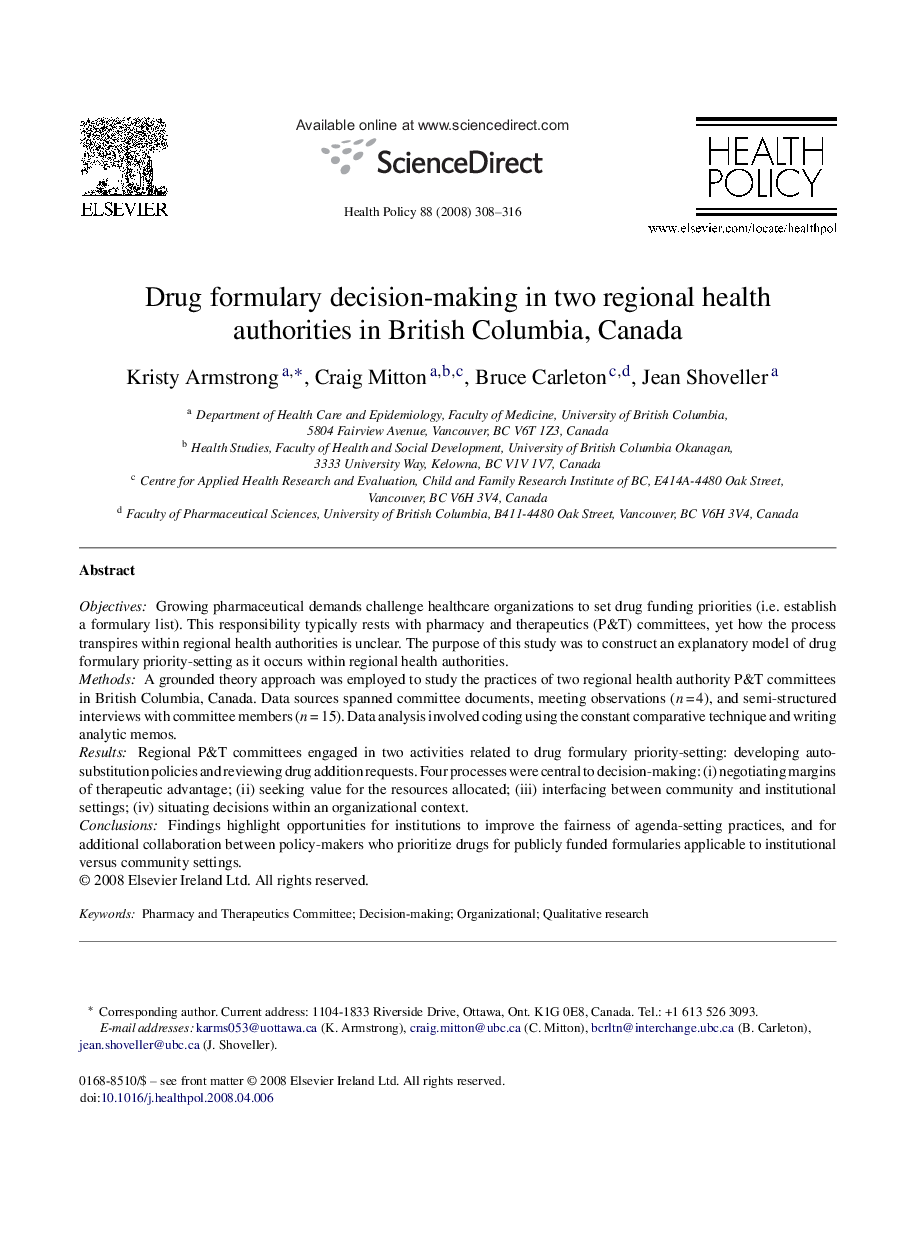| Article ID | Journal | Published Year | Pages | File Type |
|---|---|---|---|---|
| 4198815 | Health Policy | 2008 | 9 Pages |
ObjectivesGrowing pharmaceutical demands challenge healthcare organizations to set drug funding priorities (i.e. establish a formulary list). This responsibility typically rests with pharmacy and therapeutics (P&T) committees, yet how the process transpires within regional health authorities is unclear. The purpose of this study was to construct an explanatory model of drug formulary priority-setting as it occurs within regional health authorities.MethodsA grounded theory approach was employed to study the practices of two regional health authority P&T committees in British Columbia, Canada. Data sources spanned committee documents, meeting observations (n = 4), and semi-structured interviews with committee members (n = 15). Data analysis involved coding using the constant comparative technique and writing analytic memos.ResultsRegional P&T committees engaged in two activities related to drug formulary priority-setting: developing auto-substitution policies and reviewing drug addition requests. Four processes were central to decision-making: (i) negotiating margins of therapeutic advantage; (ii) seeking value for the resources allocated; (iii) interfacing between community and institutional settings; (iv) situating decisions within an organizational context.ConclusionsFindings highlight opportunities for institutions to improve the fairness of agenda-setting practices, and for additional collaboration between policy-makers who prioritize drugs for publicly funded formularies applicable to institutional versus community settings.
